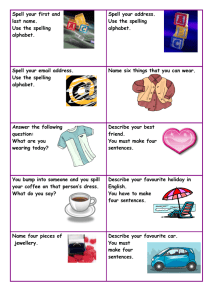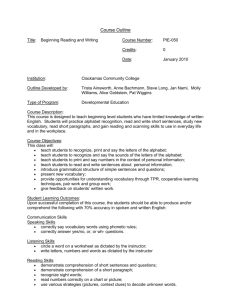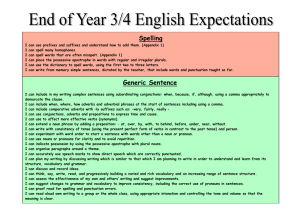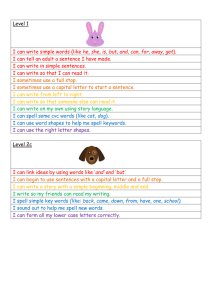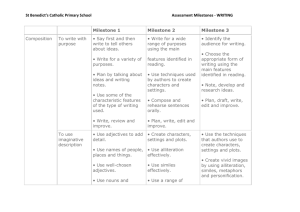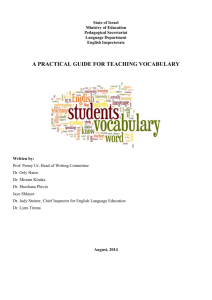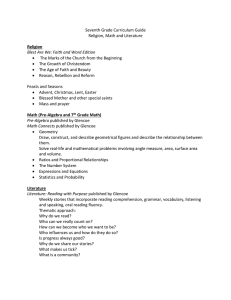National Curriculum – Tracking: writing
advertisement
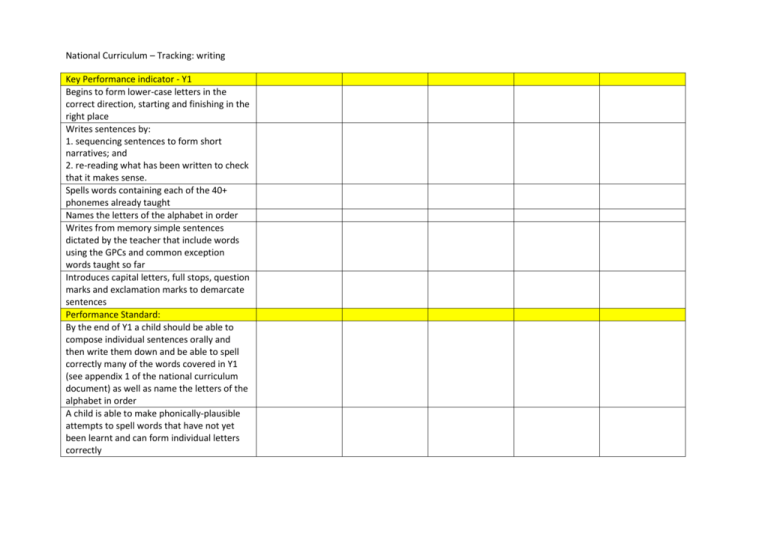
National Curriculum – Tracking: writing Key Performance indicator - Y1 Begins to form lower-case letters in the correct direction, starting and finishing in the right place Writes sentences by: 1. sequencing sentences to form short narratives; and 2. re-reading what has been written to check that it makes sense. Spells words containing each of the 40+ phonemes already taught Names the letters of the alphabet in order Writes from memory simple sentences dictated by the teacher that include words using the GPCs and common exception words taught so far Introduces capital letters, full stops, question marks and exclamation marks to demarcate sentences Performance Standard: By the end of Y1 a child should be able to compose individual sentences orally and then write them down and be able to spell correctly many of the words covered in Y1 (see appendix 1 of the national curriculum document) as well as name the letters of the alphabet in order A child is able to make phonically-plausible attempts to spell words that have not yet been learnt and can form individual letters correctly A child can: • sound and blend unfamiliar printed words quickly and accurately using the phonic knowledge and skills that have already been learnt; • read back words that have been spelt; • spell some words in a phonically plausible way, even if sometimes incorrectly; • write simple dictated sentences that include words taught so far; • demonstrate the skills and processes essential to writing by thinking aloud as they collect ideas, sequence the ideas, draft and re-read to check that the meaning is clear; and • recognise sentence boundaries in spoken sentences and use the vocabulary listed in appendix 2 of the national curriculum document when writing is discussed. A child is able to form letters correctly and confidently A child is beginning to use some of the distinctive features of standard English in their writing. ‘Standard English’ is defined in the glossary

